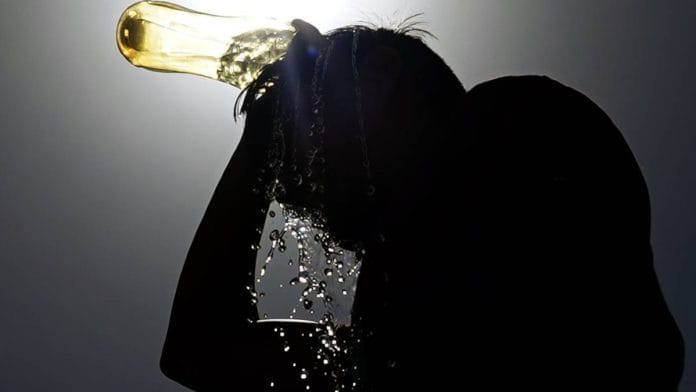New Delhi: Every time Ramesh Kumar, 25, heads out on his two-wheeler to make a delivery, he puts on his armour. But the gloves, headscarf, sunglasses and his bottle of cold water are not enough to protect him from the brutal heat of Delhi’s summer. Afternoons are unbearable.
“I have been trying for evening shifts. The day shift during May and June is exhausting. By the time I get home, I feel drained,” Kumar told ThePrint, drenched in sweat.
The extreme temperatures sweeping across northwest and central India are not just uncomfortable, but are proving deadly. As many as 61 people from the region have died of heat-related causes in the last two weeks, according to data from various state governments. And hospitals have recorded a rise in patients suffering from heat-related illnesses such as dehydration and heatstroke.
The most vulnerable, including the delivery agents, are those who are forced to endure these high temperatures for extended periods due to their work.
The intense heat has only increased the demand for home delivery services in urban centres like Delhi. People hesitate to step out during lunch hours because of the high temperatures, and resort to getting supplies from delivery apps. While most of these services are cashing in on the surge in demand, the ones to bear the brunt are the people providing these services.
“The peak food delivery hours are afternoon lunch hours. There are days when I am delivering three to four orders in a single trip,” Kumar says.
Many researchers have studied how intense heat in a region can impact labour productivity.
In 2021, scientists from the Indian Statistical Institute, Delhi School of Economics, University of Chicago and University of North Carolina observed in a study that hotter years were associated with lower economic output in developing countries.
“Climate control significantly mitigates productivity losses. In a national panel of Indian factories, annual plant output falls by about 2 per cent per degree Celsius (rise in temperature). This response appears to be driven by a reduction in the output elasticity of labour,” the study report read.
Also Read: Heatwave isn’t sparing actors, politicians. India must build resilient cities
Interventions
Some of the home delivery companies have taken note of the impact of heat on their delivery staff.
Food delivery service Zomato has requested customers to avoid ordering from the app during peak afternoon hours on Sunday.
“Please avoid ordering during peak afternoon unless absolutely necessary,” Zomato posted on its official social media account.
Spokespersons from its competitors, Swiggy and Zepto, told ThePrint that they have also been issuing advisories for customers on their applications. These advisories range from asking customers to offer water to the delivery staff, to being more forgiving of late deliveries.
Mohammad Yasir, 22, another agent employed with multiple delivery services in Delhi-NCR, told ThePrint that most restaurants do not even allow delivery staff to wait inside the premises to get some relief from the heat. They are left standing outside till the food is prepared.
“Some big restaurants provide cold water while we wait for the order to be prepared, but most of the food joints do not even allow you to enter the outlet. They make us wait outside. What will they lose if we stand below the fan or AC for a few minutes?” he asked.
Like the others, he too tries to protect himself from the gruelling afternoon heat with gloves, a headscarf and sunglasses.
“By the time I remove my helmet, I am soaking wet. I also completely freeze my water bottle, so I get some cold relief when I am on the road. But this is all temporary. It is so hot outside that in a few hours, it feels like I am drinking boiling water,” Yasir says.
Experts point out that some cities in Rajasthan, Gujarat and Haryana have set up water points and shaded areas for outdoor workers to get some respite during their daily work. Such government and citizen group interventions can go a long way in saving lives during intense temperatures.
“Staggered shifts, to function with minimum staff during peak heat, can also help. Increasing compensation for those working during such hours is also important while providing them with protective gear. Going forward, such temperatures will become the new normal. We will have to find ways to protect the most vulnerable,” said Dr Dileep Mavalankar, Director of Indian Institute of Public Health in Gandhinagar, who spearheaded India’s first heat action in Gujarat.
(Edited by Nida Fatima Siddiqui)
Also Read: Urbanisation behind 60% of warming trend in Indian cities, tier-2 towns in the east worst-affected







I live overseas and whenever I talk to friends or family members who live in India, they almost always talk about how good things are in India because of the ready availability of “servants” and delivery services. This article highlights that their easy life is literally built on the blistering backs of the poor. Sadly they consider it an entitlement because they are rich and are totally oblivious to the plight of the poor.